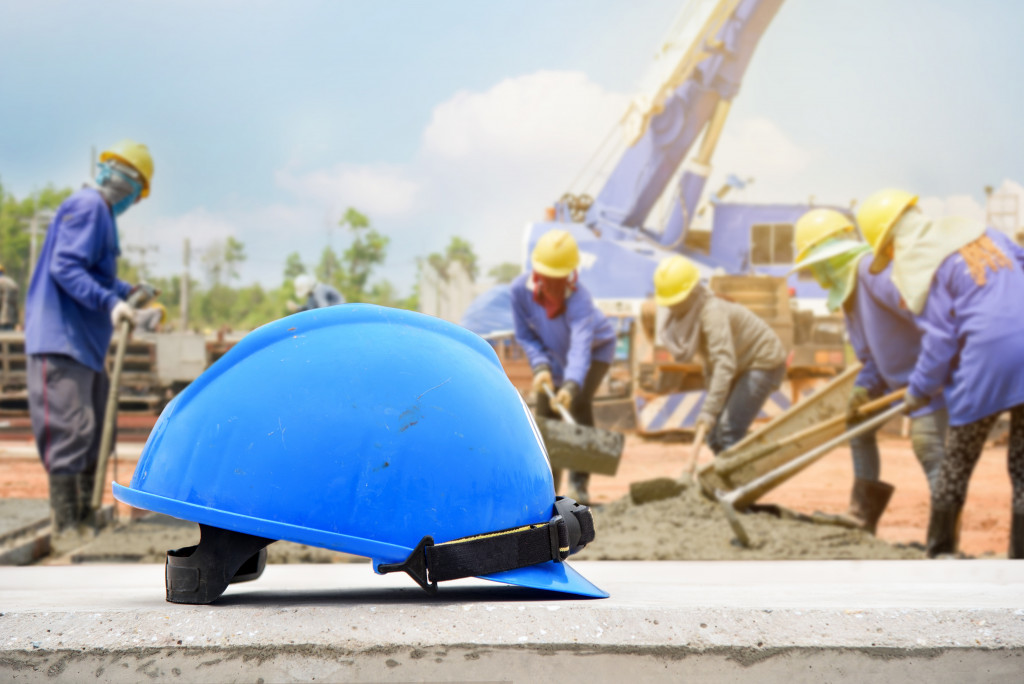- Safety on construction sites is essential, as 5,147 workers died from on-the-job accidents.
- While working on a construction site, wearing the appropriate safety gear, such as hard hats, safety vests, and work boots with steel toes, is essential.
- Employers must inspect the area for potential hazards before work begins and establish strict protocols.
- Safety training programs should be conducted regularly to ensure workers understand their rights and responsibilities regarding worksite safety.
Construction sites are some of the world’s most hazardous places to work. According to the United States Department of Labor, construction workers face various safety risks that can cause serious injuries or death. Statistics compiled by the Bureau of Labor Statistics (BLS) show that in 2017 alone, 5,147 construction workers died from on-the-job accidents. This accounted for 21.5% of all workplace fatalities and represented an increase of 10% from 2016 figures.
The primary causes of death and injury on construction sites include falls, electrocutions, being struck by objects or equipment, and being caught between accidents. Injuries related to falls make up a significant portion of these fatalities: out of the 5,147 deaths recorded by BLS in 2017, 39% were due to falls from ladders or scaffolds. Furthermore, nearly 70000 reported cases of serious injury resulting from falls on construction sites that same year; this represents an alarming 20% increase compared to 2016 figures.
Working on a construction site carries significant hazards for those employed in the industry – both physical and psychological – which further emphasizes why it is essential for employers and workers alike to remember safety protocols when onsite. Here are a few things to remember for work safety.
Construction Safety Gear

The first and foremost safety precaution to remember when working on a construction site is the importance of wearing protective gear. There are too many variables to consider when trying to identify safety hazards. While inspecting the area for potential fall hazards might be essential, it is equally important to wear safety gear. Here are a few necessary workwear for safety items to consider.
Hard Hats
Hard hats are almost synonymous with construction sites. It is imperative to wear one at all times, as it provides protection and minimizes the risk of head injuries from falling debris or even electrocutions.
Safety Vests
It is also essential for workers to wear safety vests at all times, especially during night hours when visibility can be low. Safety vests identify people working onsite and also help protect from scratches and minor cuts and provide some level of insulation against electric shocks.
Work Boots
Wearing appropriate footwear is essential for any site worker. The proper work boots with steel toes provide an extra layer of protection against heavy tools and equipment that may be dropped or used close to a worker’s feet. Additionally, choosing boots with slip-resistant soles can help minimize the risk of slipping or tripping.
Proper Workwear
A person’s clothing inside the site must also provide safety measures. Fabrics like cotton are the least suitable because they can easily catch fire if exposed to an open flame. It is best to wear construction workwear explicitly designed for the construction site to ensure the highest degree of safety.
Safety Inspection and Protocol

Of course, employers must do their part regarding safety on a construction site. Before any work begins, it is essential that an employer performs a thorough inspection of the area and identifies potential hazards such as exposed wires or uneven ground. They should also establish strict protocols for workers to follow when working onsite and ensure their staff understands the importance of safety procedures.
Employees can also report conditions or situations that could present potential threats inside the site. By having an open line of communication and working together, employers and employees can create a safe work environment for everyone involved in the construction project.
Safety Training Programs
Finally, safety training programs are also essential for any construction site. These must be conducted regularly to ensure workers understand the importance of following proper protocols and abiding by safety measures. Training sessions should cover basic worksite operations, such as using tools and equipment properly, identifying potential hazards on site, and always wearing protective gear when necessary.
You can outsource training programs from safety organizations or create an in-house program for your employees. It is essential to take the steps necessary to ensure that workers know their rights and responsibilities regarding construction site safety and the potential risks if these precautions are not followed.
Final Thoughts
By following the advice mentioned here, employers and employees can ensure a safe working environment at any construction site. Taking extra precautions and being mindful of possible dangers can help everyone stay safe and secure onsite. Remembering these tips can go a long way in ensuring the protection of yourself and those around you while working and visiting a construction site.

